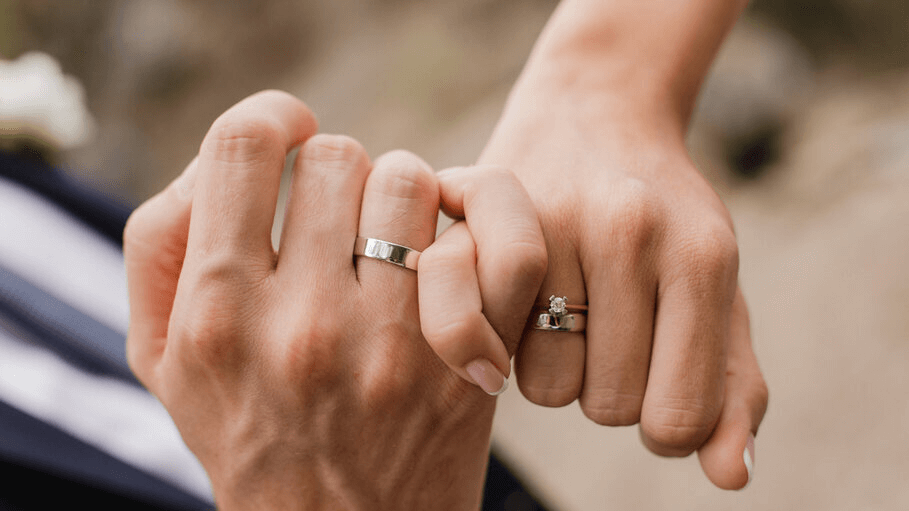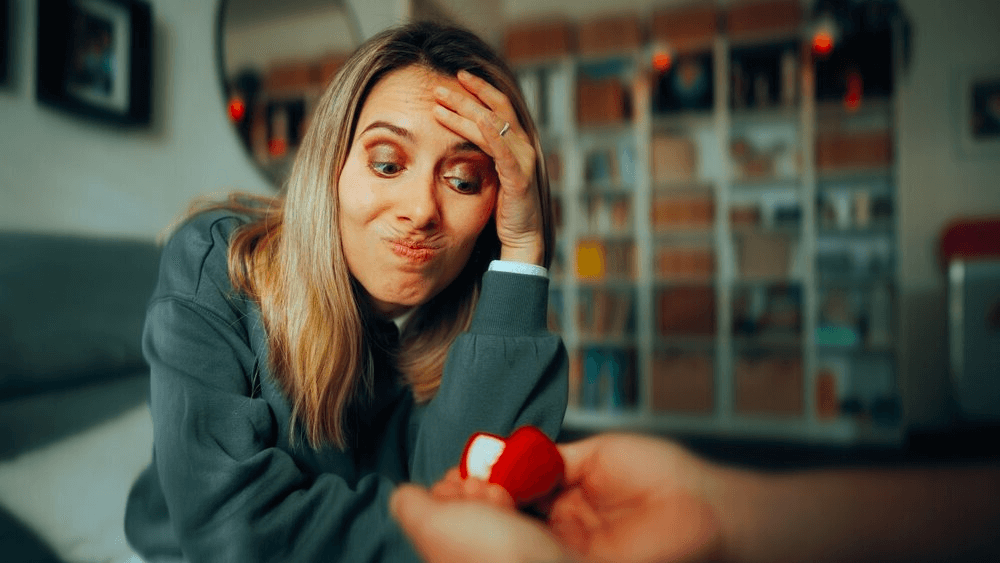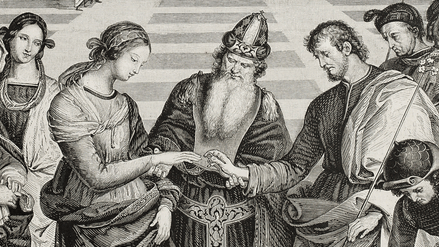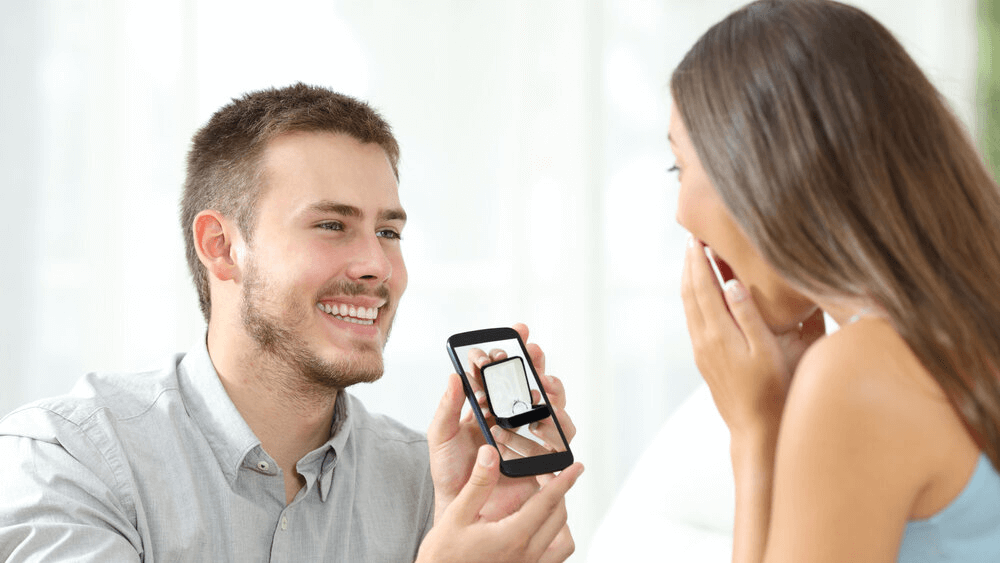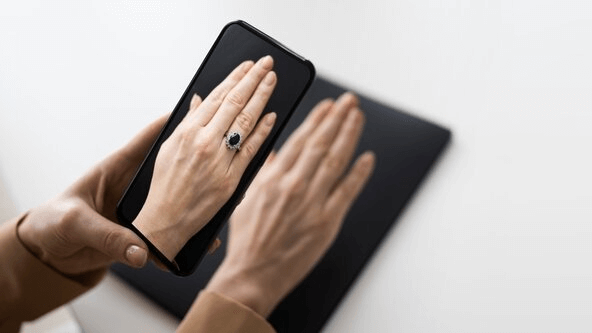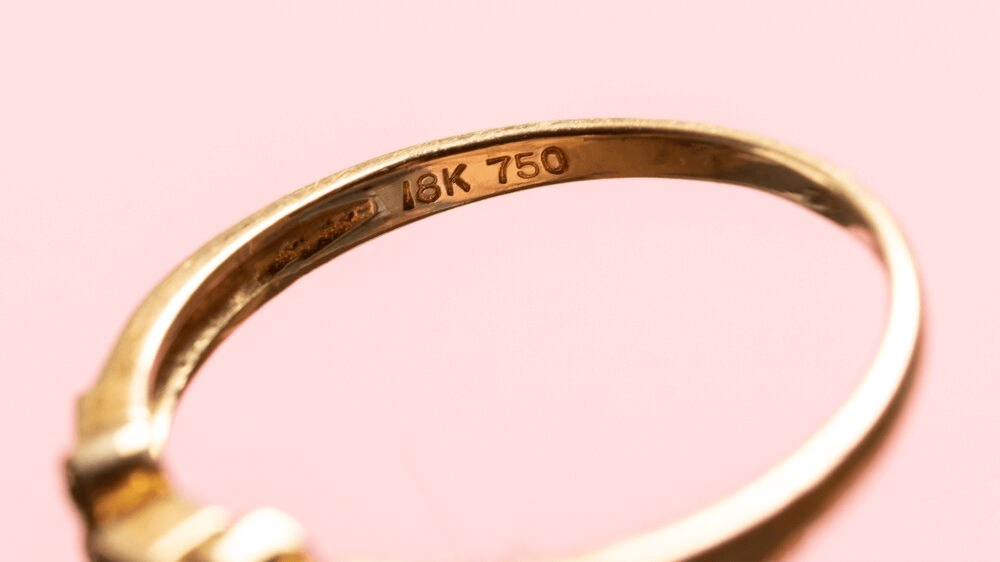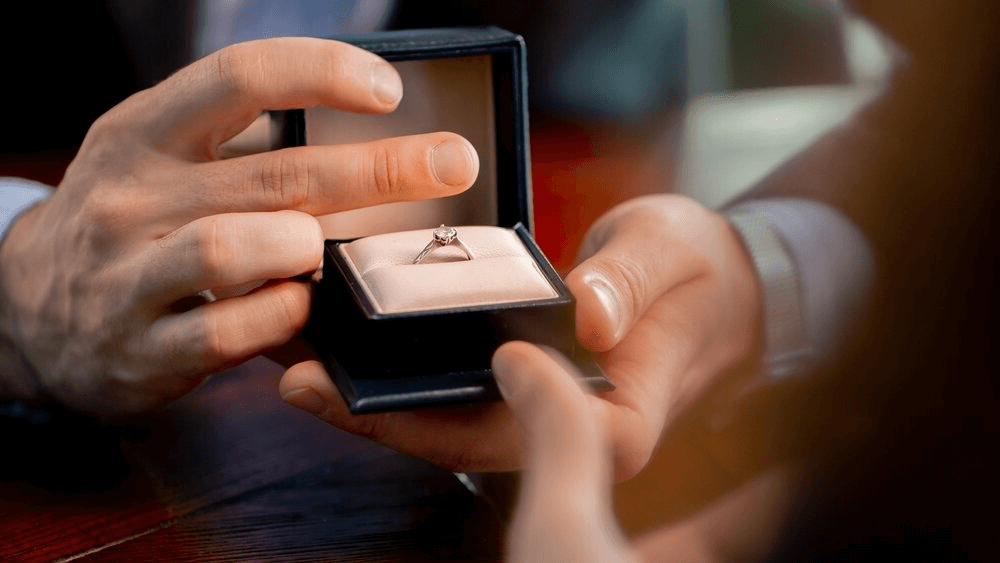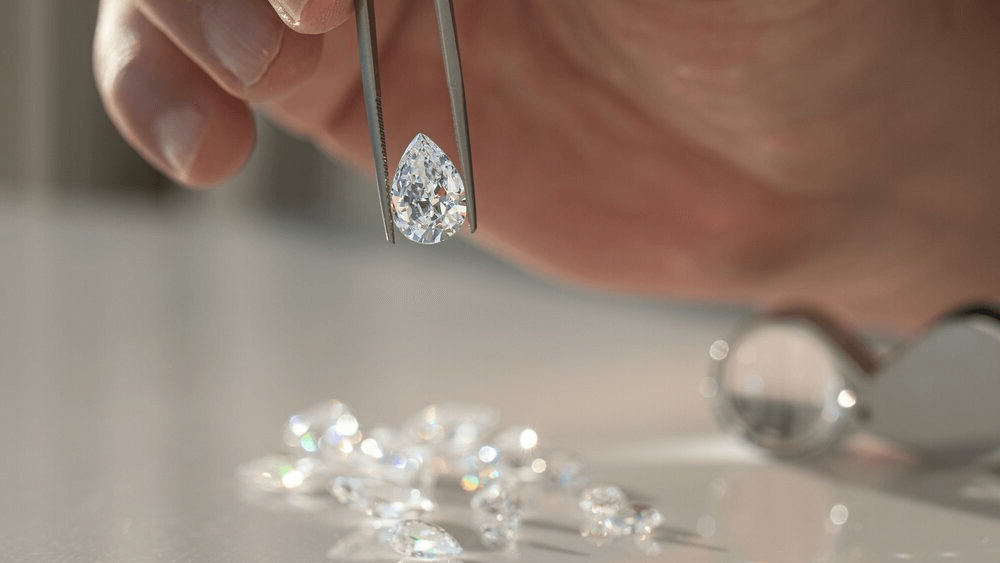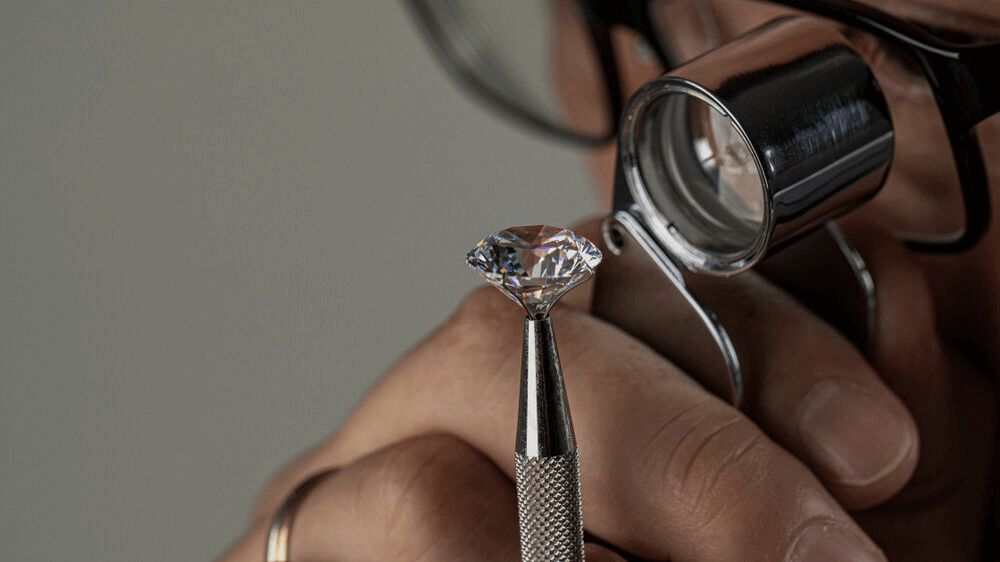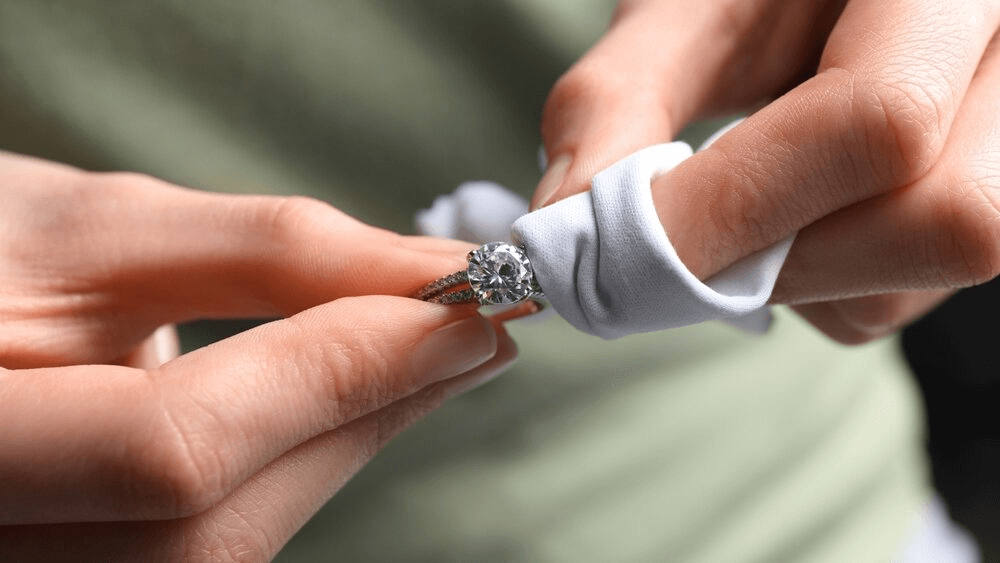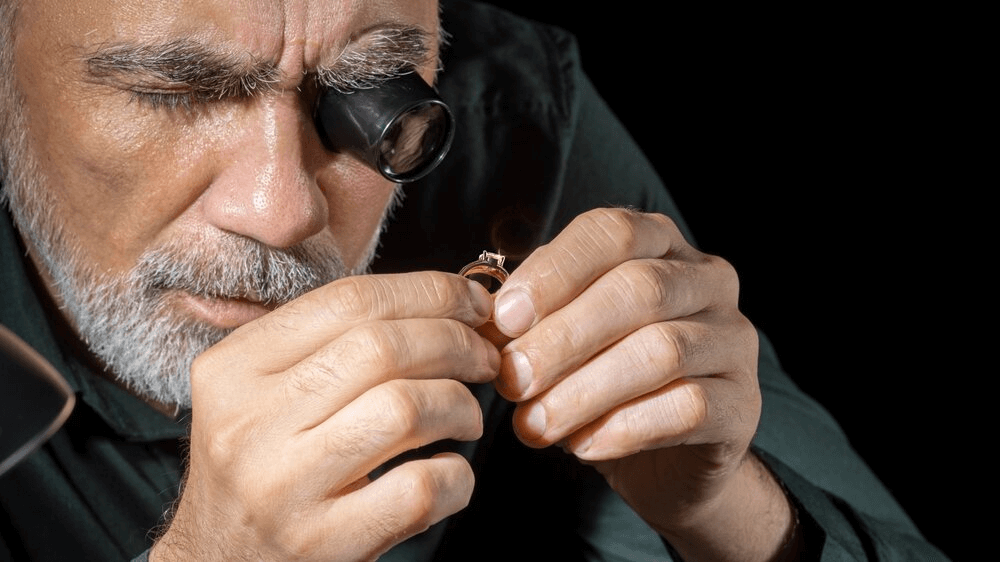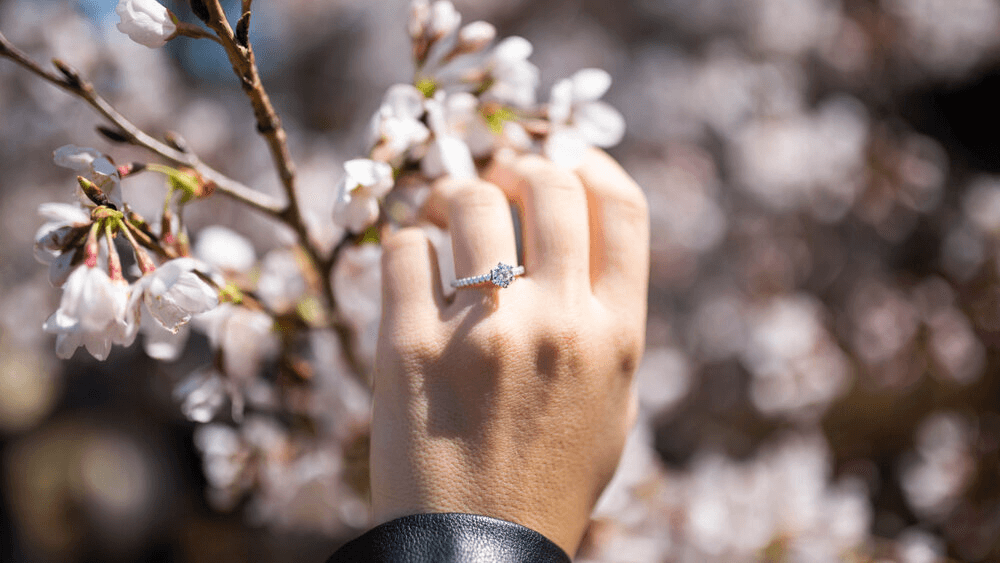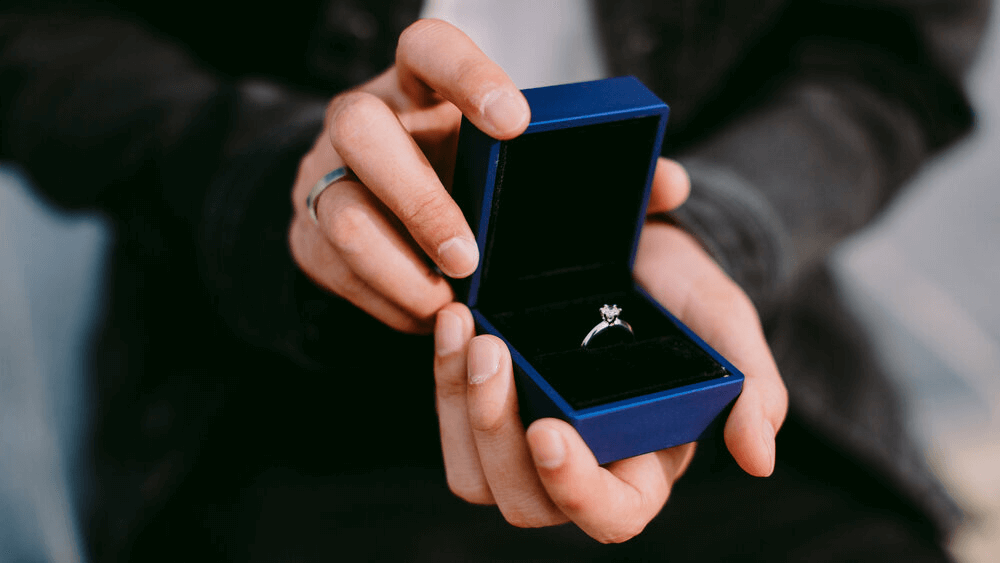Diamond Upgrades: Transform Your Engagement Ring Today!

By Gary A.

Edited by Olivia H.
Published Mar 12, 2022
Edited on Dec 18, 2024
Upgrading your diamond can be an exciting way to reflect a new chapter in your life, whether you’re looking for a larger stone or simply one that better suits your evolving style.

- 7 Quick Tips for Buying a Diamond Engagement Ring and Examining Diamond Upgrades
- Introduction to Diamond Upgrades
- The Evolution of Your Diamond Engagement Ring
- Navigating the Financial Landscape of Diamond Upgrades
- Elevating Style and Quality
- Making the Right Upgrade Choice
- Our Expert Take
- 10 FAQs
Before we dive deeper into the specifics, here are some practical tips to help guide your decision-making process:
7 Quick Tips for Buying a Diamond Engagement Ring and Examining Diamond Upgrades
- Understand the 4 Cs of Diamonds: Before considering a diamond upgrade or purchasing an engagement ring, familiarize yourself with the 4 Cs: Cut, Color, Clarity, and Carat. The cut impacts the diamond’s brilliance, the color should ideally be near colorless, clarity refers to the absence of inclusions, and carat reflects the size. Balancing these factors according to your preferences and budget is crucial.
- Compare Before and After Upgrade Options: When upgrading, closely compare the specifications of your current diamond with potential upgrades. Assess how the size, color, clarity, and cut will change. Visualize and understand the tangible differences an upgrade will bring, ensuring it aligns with your expectations and value for money.
- Examine the Setting Compatibility: Ensure that the new diamond will fit into your existing ring setting or if a new setting is required. Some larger diamonds might necessitate a different style or more robust setting to securely hold the stone. Consider the additional cost if a new setting is needed.
- Factor in Style and Personal Preferences: Your personal style or that of your partner should guide the upgrade process. Trends might change, but choosing a diamond that reflects personal taste ensures timeless appeal. Whether it’s a classic round brilliant or a more unique pear shape, select a diamond that resonates with your style preferences.
- Check Certification and Grading Reports: For both the original diamond and the upgrade, verify that they come with a certification from a reputable grading entity like the GIA or AGS. These reports provide an unbiased assessment of the diamond’s quality and are essential for validating your investment.
- Consider Future Resale Value: While upgrading, think about the potential resale value of both your current and future diamonds. Some diamonds retain value better than others based on their quality and rarity. Understanding the market and demand can be beneficial, especially if you plan to upgrade again in the future.
- Evaluate Emotional Attachment and Sentimental Value: Assess the emotional significance of your current engagement ring. Upgrading the diamond might mean letting go of a piece with sentimental value. Be sure that the emotional aspect aligns with your desire for a physical upgrade, ensuring the decision brings joy and satisfaction.
Now that you’ve got these practical tips, use Jeweler AI below to find the perfect engagement ring that suits your style and budget:
Introduction to Diamond Upgrades
A diamond upgrade is, as the name suggests, an option whereby you can revisit your original jeweler and ‘trade-in’ your diamond for a larger one.
The difference between a diamond upgrade and simply buying a new diamond for your ring is that you can off-set the cost of that more expensive diamond, by returning that original stone to the jeweler. It’s a little like a part exchange on a vehicle. You only pay the difference, rather than the full price.
Different jewelers approach the upgrade option differently, but it’s common practice for jewelers to honor the original price you paid for your diamond during this exchange. This is a great benefit for shoppers – particularly if only a few years have passed since they bought the original ring – since the resale value of a diamond tends to take a dip immediately after purchase.
While, long term, they’re a strong investment, attempting to sell a used diamond to a new buyer yourself is rarely the best option.
Why Upgrade Your Diamond?
Whether or not you’re open to the idea of upgrading your diamond is a wholly personal decision. For some, the desire to reflect a new stage in life – maybe celebrate a landmark moment or anniversary – will come on after a few years while, for others, it might take decades before they get that itch to trade-up their diamond. For a lot of people, the meaning attached to that original diamond will be too powerful for them to consider changing it.
Neither stance is bad or good – it’s simply down to you, and how you feel about embracing a new diamond.
There are plenty of reasons to consider a diamond upgrade, including:
- Embrace a new style
Fashions are constantly changing and, while there’s no need for your ring to reflect what’s ‘in’ and turn away from what’s currently ‘out’, there’s nothing wrong with wanting to embrace a turning point in your own personal sense of style. Some shapes, like the Pear and Heart, tend to run their course before fading from view for a few years, and wearers may eventually feel as though they need a more ‘evergreen’ style, like the Oval or Round Brilliant. - Better quality
While, at WillYou.com, we’re dedicated to ensuring that shoppers go into the process of purchasing a diamond with as much information and research under their belts as possible – and, for that reason, that they’re able to get the very best value for their investment – some shoppers may not acquire that baseline knowledge until after they’ve invested. Some stores – particularly the big chains – carry an incredibly wide variety of diamonds in stock, and quality can vary significantly between one diamond and the next, meaning that, unless you know your stuff, you can easily purchase a visibly included, poorly cut, or yellow-colored diamond.
Upgrading that diamond means putting your new-found knowledge to use, and getting a stone that is not ‘brought down’ by inclusions or color, or a dimmed sparkle. - Commemorate an anniversary
While you won’t hit your diamond wedding anniversary until sixty years after saying ‘I do’, any anniversary is a perfect excuse for jewelry. And, while the usual diamond jewelry gifts will never go down the wrong way, choosing to upgrade your partner’s diamond engagement ring is a wonderful surprise that restates and reaffirms that original commitment you made. - Passing down an heirloom piece
Most diamond upgrades are fulfilled by jewelers who created the original piece for the customer, but it’s also not unheard of for people to have estate jewelry upgraded to reflect the style and taste of a new wearer. This is particularly useful if the original diamond features an old cut, and you would rather propose with something that, while special, lives up to modern expectations.
The one setback to getting an upgrade is, of course, the fact that your family will have to part ways with a diamond that may have been passed down through multiple generations already. There’s nothing wrong with feeling ready to do this, but it’s not something everyone will feel able to do.
The Emotional Journey of Upgrading
Whatever budget you were working to when you originally purchased your engagement ring, a new budget can be a compelling reason to trade-up. This is, perhaps, one of the most common reasons for upgrades. Couples can commemorate a new era of financial stability and comfort together and reflect that within the very object that represents their love and commitment to one another.
Think of it a little like renewing your vows a few years down the line, when you can afford a more lavish do between friends and family. It’s not a requirement, but it’s a great excuse for a party.
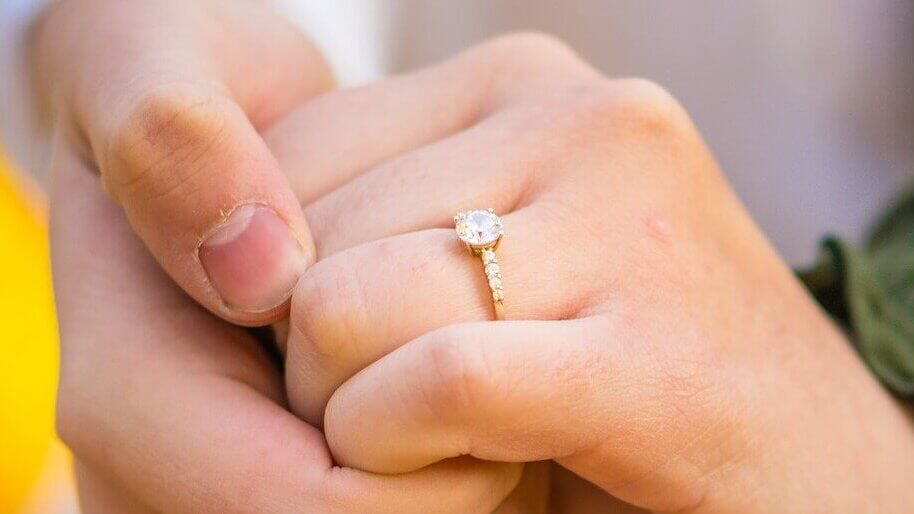
The Evolution of Your Diamond Engagement Ring
A diamond engagement ring is a permanent representation of the love and commitment that exists between you and your partner, but that’s no reason to say that it can’t also change and grow alongside you. As the moment you went down on one knee moves further and further into the past, you may start to find that your financial situation tells a totally different story to the one it told all those years ago. What was totally out of reach once upon a time is, for the first time, totally feasible.
In other words, you may start to feel yourself glancing in jewelry store windows – side-eyeing bigger and more impressive diamonds.
This is a common occurrence around the world, and it’s no reason for you to relegate that original ring to the jewelry box for the rest of your lives. We develop a powerful emotional attachment to our engagement rings the moment we first lay eyes on them, and that’s not something anyone walks away from easily.
So, what’s the alternative? Diamond upgrades are something many jewelers across the United States now offer, and they’re a great alternative to starting over with a totally new ring. Here’s what you need to know.
Navigating the Financial Landscape of Diamond Upgrades
The cost depends entirely on the price difference between your current diamond, and the diamond you are upgrading to.
In other words, investing in a diamond upgrade is a lot like investing in a diamond (although, ultimately, you will spend less money). That is to say, you could spend a modest amount on a relatively minor upgrade, or thousands of dollars on a much larger, much more impressive diamond.
Elevating Style and Quality
The process of picking a replacement for your original diamond should be exactly the same as the original process. First, you’ll want to establish a firm budget. Just because you’re upgrading, and only paying the difference between the two stones, does not mean that you can get away with ‘winging it’ and hoping for the best.
The only way to make a sound investment in this upgrade is to go into the process with a clear figure in mind. Focus solely on GIA graded diamonds, for the best value possible.
Next, you’ll want to look for exactly the same benchmarks of quality and value that you (hopefully) looked for the first time round. Eye cleanliness, no visible color, but low enough grades for clarity and color that you’re not overspending on what will go unnoticed by you, the wearer, and the ring’s admirers.
As always, a strong cut (Excellent or Very Good) is a total non-negotiable, so don’t be tempted by a diamond with a lower grade but a much, much more attractive price.
The Emotional Weight of Upgrading
The main disadvantage to getting a diamond upgrade is, of course, the fact that that original stone likely holds a lot of emotional significance for you and the wearer. Part of what makes diamond the obvious choice for a proposal is the long history behind it – that billion-year journey from the earth’s mantle to its surface – and to end that history in favor of a new diamond can feel a little heart-wrenching to some people.
Of course, the upshot is that, with a new diamond, you take on a new story, but you’ll want to seriously consider whether or not you’re happy to say goodbye to the stone that first represented your engagement.
Sure, in an ideal world, you’d keep that diamond somewhere special and upgrade to something newer, bigger, or better in quality. But, at the same time, the greatest benefit to diamond upgrades is that you don’t need to pay for the full cost of a new diamond – only the difference in price between the first and the second. In other words, it’s not always feasible for people to invest in a new diamond while keeping the old one in their possession.
Some people will be against the idea. Heirloom pieces can travel through generations of the same family for the sole reason that these diamonds can take on tremendous sentimental value – but, even if you upgrade your diamond, there’s no reason to suggest that new diamonds won’t also be passed down through the generations in the future.
Making the Right Upgrade Choice
Choosing a diamond upgrade requires the same amount of time and effort that it took to find the original diamond. You want this one to take your engagement ring to the next level, so don’t skimp on research.
Think about the Four Cs: Cut, Clarity, Color, and Carat Weight. Chances are, you’ve got a carat weight in mind already – but make sure you’re not overpaying for an unnecessarily high clarity or color grade, or underpaying on a poorly cut diamond.
Take this as an opportunity to choose your next diamond together – unless, of course, you want it to be a surprise.
Think about minimizing fluorescence, avoiding bad bow ties (something we do on behalf of our customers here at WillYou), and maximizing symmetry and polish for the best possible sparkle. Take a look at our guides for more detailed guidance.
Our Expert Take
Diamond upgrades are an option that people will feel strongly about one way or the other. Sure, there will always be people who feel that giving up the original diamond – the stone that was initially used as a symbol of the couple’s love and commitment – is too special to give up, but the benefits of embracing a new chapter in the form of a new diamond are clear to see.
Upgrading a diamond is a great way to get a stone that, at the time, was out of reach financially, and to ensure that you are both filled with joy every time you catch sight of the ring.
Whether you think you’ve outgrown an old diamond, or simply want to reaffirm that initial promise by upgrading to something even bigger and more impressive than before, picking out a new diamond means that you’ll always have that option in your back pocket.
10 FAQs
- Q: Can I upgrade the diamond in my engagement ring to a larger size?
- A: Yes, you can upgrade to a larger diamond. It’s important to ensure the new diamond fits your ring’s setting or consider getting a new setting that accommodates the larger size.
- Q: How do I choose the right diamond cut when upgrading?
- A: Select a cut that aligns with personal style preferences and maximizes the diamond’s brilliance. Round brilliant cuts are popular for their sparkle, but other shapes like princess or oval may suit different tastes.
- Q: Will upgrading my diamond affect the ring’s sentimental value?
- A: Upgrading can alter the sentimental value since the original diamond often holds special memories. Weigh the emotional significance against the desire for a larger or higher quality stone.
- Q: Is it possible to upgrade my diamond while keeping the same ring setting?
- A: It depends on the size and shape of the new diamond. Some upgrades may fit the existing setting, but larger stones might require a new or modified setting.
- Q: How do I ensure I’m getting a fair price for my diamond upgrade?
- A: Compare prices from different jewelers, check the diamond’s certification, and consider its 4 Cs to ensure you’re getting a quality stone at a fair price.
- Q: Should I upgrade my diamond for an anniversary or special occasion?
- A: Upgrading for a special occasion like an anniversary can be a meaningful gesture. It symbolizes the growth and evolution of your relationship.
- Q: How does the color and clarity affect my diamond upgrade choice?
- A: Aim for a balance between color, clarity, and budget. Colorless diamonds are rare and expensive, while slight color variations can be more budget-friendly. Clarity impacts the stone’s appearance, so choose a level that’s eye-clean.
- Q: What’s important to consider in the diamond’s certification during an upgrade?
- A: The certification should come from a reputable lab like GIA or AGS and detail the diamond’s 4 Cs, ensuring the quality and authenticity of the stone.
- Q: How can I make sure the upgraded diamond matches my personal style?
- A: Reflect on your style preferences and daily activities. Consider if you prefer a classic look or something more modern, and ensure the diamond complements your lifestyle.
- Q: Is it better to upgrade to a higher carat weight or better quality diamond? A: This depends on personal preference. Some prioritize size (carat weight), while others may value higher quality in terms of cut, color, and clarity. Consider what aspect of the diamond is most important to you.
Transform your symbol of love with Jeweler AI. Discover the perfect diamond upgrade and engagement ring transformation that resonates with your story.
FOLLOW-UP GUIDE SERIES


